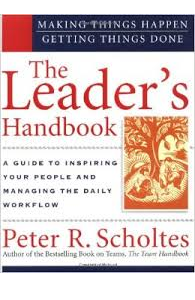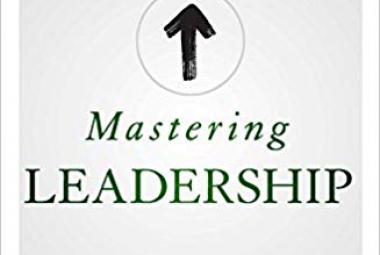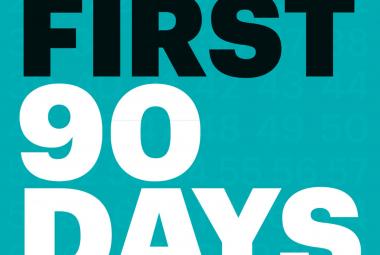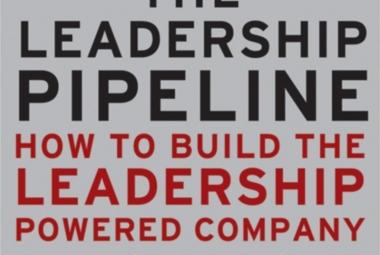The Leaders Handbook, from Peter Scholtes is a management classic. Scholtes describes what leadership should be like in the 21st century: inspiring people to continuously improve the processes in which they work. For me personally, this book describes the link between lean production and what Peter Senge (1990) describes as systems thinking.
The 400 pages of this book are so full of content, that it is impossible to capture the essence within 1000 words. Therefore, this article describes the three parts that interested me the most: 6 new leadership competencies, the 7 steps of breakthrough improvement and the 8 steps of designing a data collection system to guide improvements.
Every leaders should master the following LEADERSHIP COMPETENCIES to be able to lead in a learning organization.
- Practice systems thinking and how to lead these systems. People use different methods and processes to realize a predefined goal. Whenever the goal is not achieved, the manager should look at the processes and methods used instead of blaming the people who worked in that process.
- Understand variability. There are two types of variability in each system: ´daily´ variability and ´special cause´ variability. Most of the variability exist in the first category and can be solved by taking a closer look at processes that are used on a daily basis.
- Understand how we learn, how we develop and how we improve. Learning is the result of a dynamic exchange of theory and praxis. With the help of the PDCA cycle, experiments are put in place to see how we can improve our processes using the new acquired theory.
- Understand why people behave the way they do. It is impossible for a manager to motivate people by rewards of punishment, because this assumes people have a secret stash of effort that they are only willing to use whenever they are rewarded or punished for it. The starting point should be, that people are generally motivated to do a good job and willing to do the right thing anyway. It is the system that they are in, that influences their behavior (Senge, 1990).
- Understand how systems, variability, learning and behavior are connected. A combination of the first 4 competencies. Together, these 4 describe Deming´s ´System of profound knowledge´ and all 4 areas should be taken into account simultaneously.
- Offer vision, direction, meaning and focus to the organization. A leaders should inspire people to think about their role in the organization. How do your tasks help it achieve its goals? And how do they fit in the systems and processes? How can I be more effective and more efficient within this process? And finally, what feedback and information do I need to know that I am doing a great job?
Chapter 5 describes SEVEN STEPS FOR BREAKTHROUGH IMPROVEMENTS. These Breakthrough improvements are different from small improvements in the daily work. With breakthrough improvements, Scholtes refers to developing new products, a completely new system, or an improved efficiency ratio to an extend that was truly unimaginable beforehand.
- Take step back and observe the system. Use the SIPOC to evaluate what the vision and mission of a department is. What is the goal of the system?
- Take a step forward and look into the system. Use input from customers, employees and suppliers to map the current system and identify wastes.
- Describe the future, ideal system. Imagine the current systems were destroyed and you had the possibility to design them from scratch, how would the system achieve its goals? (value stream mapping might be useful here)
- Identify actions, a plan for success and select priorities. Use tools like a tree diagram to define actions that are small enough to manage und use PERT charts or Gantt charts to define the critical path of the actions and the dependency between them.
- Mobilize the required resources and start execution. Use project teams to change the system into the direction of the ideal system. Don’t forget to make enough financial and technical resources available.
- Have managers spend their time planning improvement activities and researching opportunities instead of reviewing other people’s work and taking decisions for other people.
- Use what is improved as input for the next cycle of improvements. Never stop improving the system after the first round of improvements. The author describes the PDSA (Plan Do Study Act) cycle, in which Act is followed by a new Plan phase.
Chapter 7 describes 8 STEPS OF DEVELOPING A DATA COLLECTION SYSTEM to be able to guide continuous improvement in one direction.
- Define the goal of the system. Again, we start with the goal question. Who benefits form this system and what is it used for?
- Define one measurable target on which the system should focus on, what Rother (2010) describes as the target condition. How do we know the system is performing well?
- Define the goal of each process within the system. For each process, we need to define what is important to be able to meet the goal of the entire system?
- Identify the KPI that can be used within the processes that help you achieve the goal. As a leader, you have to be able to explain why a KPI is important and for what it is used.
- Make sure the new KPI fits in the entire system. KPI´s should overlap between departments and systems (see also: hoshin kanri). Nothing leads more management waste as contradicting KPI´s.
- Define operational definitions for each KPI. This means translate the lagging KPI into leading KPI´s. What can the team of a process do to improve the performance?
- Plan for data collection. Control charts and checklists can be used to measure performance. (these can then be discussed in the team board meetings)
- Collect data. Start small, for instance one KPI for one team, and then gradually increase the measurements. Use the PDSA cycle to improve the data collection system.
The Leaders Handbook describes a foundation for leadership, necessary to support an organization of continuous improvement. Many of the things Scholtes describes align with the 14 management principles Jeffrey liker describes in his book The Toyota Way. I would like to emphasize the importance of one of these principles, showing respect for colleagues and partners. The best way to do this, according to Scholtes, is to define a system in which process KPI´s are measured and improved, instead of measuring and punishing people. By improving process related KPI, the results KPI will automatically improve as well.
It is the task of every leader in the organization to focus on improving these processes. Also, they should share the right information about current standards with the necessary people to make sure everybody is on the same knowledge level of the current standards and learning processes, so that they can improve these processes as well.
Continue to
High Five! - K.Blanchard & S.Bowles (summary)
References:
Liker, J., 2004, The Toyota Way, 14 management principles from the world greatest manufacturer New York: Mc-Graw Hill (summary / order this book)
Rother, M., 2010. Toyota Kata: Managing people for Improvement, Adaptiveness and Superior Results, New York: Mc-Graw Hill (summary/ order this book)
Senge, P.M., 1990, The Fifth Discipline – The Art & Practice of a Learning Organization, New York: Doubleday (summary / order this book)
Scholtes, P.R., 1998, The Leader's Handbook – Making Things Happen, Getting Things Done, New York: McGraw-Hill (order this book)















